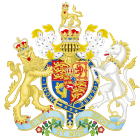Royal burgh facts for kids
A royal burgh (pronounced BURR-uh) was a special type of town in Scotland. These towns were given a special document, called a royal charter, by the King or Queen of Scotland. Even though the official title was stopped by law in 1975, many towns still proudly use the term "royal burgh" today.
Most royal burghs were either started by the Scottish Crown (the King or Queen) or were upgraded from a different kind of town. Royal burghs were unique because they were on royal land. They also had a special right: only they could trade with other countries.
Each burgh had its own charter. This document created the burgh or confirmed its rights. Every royal burgh (except for four inactive ones) sent representatives to the Parliament of Scotland. These representatives could appoint officials called bailies. Bailies had important powers in both civil and criminal justice. By 1707, there were 70 royal burghs in Scotland.
Quick facts for kids Royal Burghs (Scotland) Act 1833 |
|
|---|---|
| Act of Parliament | |

|
|
| Long title | An Act to alter and amend the Laws for the Election of the Magistrates and Councils of the Royal Burghs in Scotland. |
| Citation | 3 & 4 Will. 4. c. 76 |
| Dates | |
| Royal assent | 28 August 1833 |
The Royal Burghs (Scotland) Act 1833 changed how town councils were chosen. These councils governed the royal burghs. After this law, people who could vote in national elections could also vote for burgh councillors.
How Royal Burghs Started
Before King David I ruled, Scotland didn't really have towns as we know them. There were larger groups of people around big monasteries or forts. Most of Scotland had small villages, not big towns like in other parts of Europe.
King David I created the first burghs in Scotland. He started in an area called Lothian, where people spoke a language similar to English. The very first burghs, founded by 1124, were Berwick and Roxburgh.
By 1130, David had also set up burghs in areas where people spoke Gaelic. These included Stirling, Dunfermline, Perth, and Scone. After he conquered Moray, he added burghs like Elgin and Forres. Before King David died, other towns like St Andrews, Montrose, and Aberdeen also became burghs.
Later kings, like Máel Coluim IV and William, added even more burghs. By 1210, there were 40 burghs in the Scottish kingdom.
Historians believe that many of the laws for these early burghs were based on customs from Newcastle upon Tyne. At that time, Newcastle was under Scottish rule. Scottish burghs were more similar to each other than English ones. By the 1300s, they were also more active in politics.
Because Scotland traded a lot, people from other countries came to live in Scottish burghs. These included people from Flanders (now Belgium and Netherlands), France, and England. The words used in burghs for places and roles often came from Germanic languages or French. For example, "provost" and "bailie" came from French.
What Happened to Royal Burghs?
The rights of royal burghs were protected when Scotland and England joined together in 1707. This was part of the Treaty of Union. It said that the rights of royal burghs would "Remain entire" (stay the same) after the union.
However, in 1975, a new law called the Local Government (Scotland) Act 1973 officially ended royal burghs. The government decided that the part of the Treaty of Union about burghs was no longer needed. Now, these towns are sometimes called "former royal burghs."
During the discussions about the new law, some politicians worried about losing the history of these towns. For example, in 1972, a Member of Parliament (MP) named Ronald Murray asked if the government planned to "abolish entirely the ancient rights of royal burghs."
Another MP, David Steel, tried to make sure that the title "Provost" (a type of town leader) could still be used. He wanted to keep the historical titles from the royal charters.
In 1977, another MP, Alick Buchanan-Smith, asked why community councils couldn't use "Royal Burgh" in their names. He also asked how historical titles could continue. A government official, Frank McElhone, replied that community councils could decide their own names. He also said there was "no statutory ban" (no law stopping) the use of historic titles for other purposes.
Because of this, some local groups called "community councils" now include "Royal Burgh" in their names. The Lord Lyon, who is in charge of coats of arms in Scotland, has allowed many royal burghs to continue using their historic coats of arms through these community councils.
Images for kids



